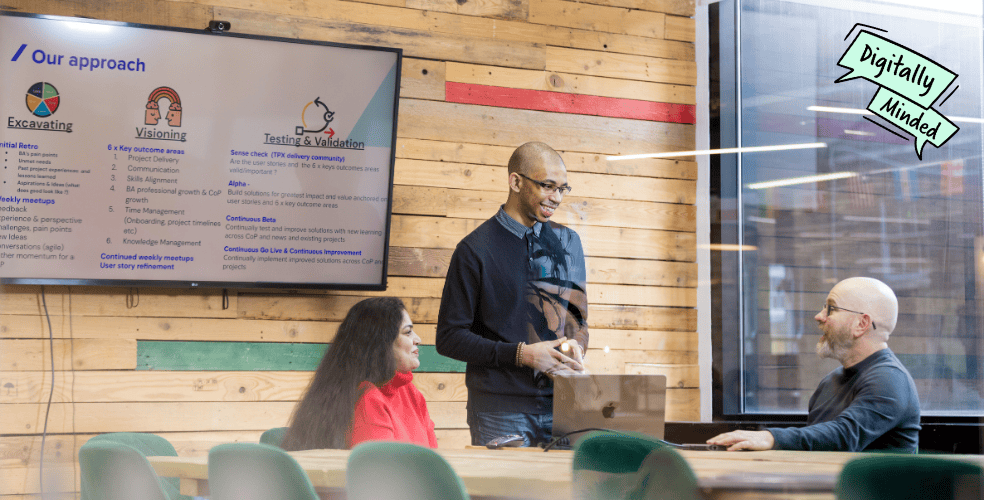Local government is at a tipping point. Under intense financial pressure, faced with rising demand, and constrained by legacy systems and fragmented digital infrastructure, many are struggling to meet the needs of their communities.
Recent research found that more than a third of staff have left councils in England and Wales over the past ten years. With a cost of living crisis and an ever-increasing adult social care burden, this emphasises how big the challenges are for these authorities to keep services running.
But there is a chance to change how we deliver our most important and costly services. By rethinking the relationship between central and local government.
The cost of going it alone
Local authorities have been left to navigate digital transformation independently for a long time. And while many have shown incredible resilience and ingenuity when it comes to local public service innovation, some challenges can only be addressed through a connected approach.
Take the technology market serving local public services. Councils often find themselves locked into expensive, outdated systems that fail to support modern, efficient ways of working. Despite strong intentions and significant investment, efforts to move away from these systems have repeatedly failed. Not because of a lack of will, but because the barriers are too large for any single authority to overcome.
What’s missing is intentional market-shaping from central government. Without consistent data standards, meaningful regulation or coordinated procurement strategies, local government can’t achieve the value of modern digital services. This isn’t about control from the top, but enabling the local government sector.
Collaboration that delivers change
A mission-led approach, where diverse stakeholders align around shared outcomes, allows us to make real progress. But this kind of public sector collaboration doesn’t happen by accident. It needs structure, permission, and resources.
One success story we can learn from is digital planning. Here, central government teams have created data standards, built digital tools, and introduced regulation to create a radically different way for local authorities to deliver planning services and share information. And it’s working. Not because government is telling councils what to do, but because they are co-designing the tools and support needed to do things differently and build more connected systems.
This kind of collaborative digital transformation demands a new model of central government stewardship. One in which the policy department responsible for regulating a local service stands up a mission team. With a strong mandate and the policy levers that only central government enjoys, these teams should convene all those with an interest in delivering the service, properly diagnose the causes of technology market failure, and form an informed view of why digital transformation isn’t happening at pace.
Armed with an informed view of the big picture, they need to prioritise the interventions that are most critical to change (almost always including data standards, and some common guidance and tooling). Finally, they must have space to experiment with interventions. As well as the flexibility to test different scaling methods until they find what works.
Sometimes, that means backfilling local authority posts so the right people can participate fully in co-design activities. Sometimes it means paying teams or suppliers to adopt a new standard. But it always means rigorous focus on the outcome, and a mission team having the authority to switch approaches as required by the services teams they’re there to serve.
Making market-shaping someone's job
One of the biggest barriers to this approach is that this isn’t currently anyone’s job. Local leaders are busy keeping vital services running. Central teams focus on policy or delivery. No one is accountable for joining the dots.
We need to make technology market-shaping a priority, not a side-of-desk activity. That means creating cross-cutting teams at the centre with the authority and resources to steward missions over time. And it means director-level, empowered leadership. Too often, this work is insufficiently visible to, or understood by, the most senior people in a department, and for that reason, it doesn’t get done.
There’s already a wealth of expertise in the system, and a growing number of precedent interventions and communities of practice to build on. Across central and local government, we have talented people who understand the challenges and know how to approach them. What we’ve lacked, until now, is the political will to act at scale.
Time to stop talking and start building
For the first time in years, we have a real opportunity to make this happen. From the skills in the digital community to the appetite for meaningful reform, the stars are starting to align.
We know it won’t be easy. But change is possible when we collaborate, build the right alliances, take a mission-led approach, and stay focused on outcomes.
We will be exploring what a mission-led government looks like for local government’s most costly and sensitive services with industry experts at our next Digital Forum on the 22nd May. Sign up now if you want to be a part of this vital conversation.

Building together for collaborative transformation
Join our next Digital Forum on 22nd May where we'll bring together public sector leaders to explore what local government needs most from the centre to drive real change.
Register to attend
Building stronger local authorities through innovation
How local authorities can help overcome mounting pressures through innovation, digital leadership, and collaborative, preventative service models.
Read moreOur recent insights
Transformation is for everyone. We love sharing our thoughts, approaches, learning and research all gained from the work we do.
-

Budget 2025 reveals how digital funding really works
Read insight -

Unlocking the benefits of AI for charities
Read insight -

What's the future for open data in the UK?
Read insight -


